Parma Italy / Italia
- Maria Scuor
- Sep 25, 2024
- 8 min read
Italiano sotto ogni sezione
After our tour of the Parmigiano Reggiano cheese factory, we spent half a day in Parma. Only issue in Italy is that most places close anywhere from 12:30 to 3:30. Therefore most of our afternoon was enjoying the outdoor scenery.
Parma is the second largest city next to Bologna in the northern Italian region of Emilia-Romagna. It is known for its architecture, music, art, prosciutto and of course cheese. It has a population of almost 200,000 and the city is home to the University of Parma, one of the oldest universities in the world.
The Parma, a large 92 km (57 mi) long stream, separates the two areas, Parma and west side of the stream is Oltretorrente area. Parma was named by the Romans to describe the round shield called Parma or Palma. The Roman colony was founded in 183 BC with 2,000 settlers and had importance as a road hub over the Via Aemilia. Like all cities in Italy, Parma too was destroyed by wars or invasions and had several rulers. It was 1860 when Parma became part of the Unified Kingdom of Italy.
Sports is very important to the people in Parma and they support; Parma Calcio (soccer team in first division Seria A), Club Zebre Rugby team, Parma Panthers American Football team, Pallavolo Parma their Volleyball team and Parma Baseball.
Here is a TikTok video of the sights we saw in Parma - Ecco un video TikTok delle attrazioni che abbiamo visto a Parma
Cheers from Parma - Saluti di Parma

Dopo la nostra visita al caseificio del Parmigiano Reggiano, abbiamo trascorso mezza giornata a Parma. L'unico problema in Italia è che la maggior parte dei posti chiude dalle 12:30 alle 3:30. Pertanto, la maggior parte del nostro pomeriggio è stata dedicata a goderci il paesaggio esterno.
Parma è la seconda città più grande dopo Bologna, nella regione dell'Emilia-Romagna. È nota per la sua architettura, la musica, l'arte, il prosciutto e, naturalmente, il formaggio. Ha una popolazione di quasi 200.000 abitanti e la città è sede dell'Università di Parma, una delle più antiche università del mondo.
Il Parma, un grande torrente d'acqua lungo 92 km, separa le due aree, Parma e il lato ovest del torrente è l'area dell'Oltretorrente. Parma è stata chiamata così dai Romani per descrivere lo scudo rotondo chiamato Parma o Palma. La colonia romana fu fondata nel 183 a.C. con 2.000 abitanti ed ebbe importanza come snodo viario sulla via Emilia. Come tutte le città d'Italia, anche Parma fu distrutta da guerre o invasioni ed ebbe diversi governanti. Era il 1860 quando Parma entrò a far parte del Regno Unito d'Italia.
Lo sport è molto importante per i parmensi e loro sostengono; Parma Calcio, Club Zebre Rugby, Parma Panthers Football Americano, Pallavolo Parma Pallavolo Pallavolo e Parma Baseball.
San Sepolcro
As we travelled down Strada della Repubblica we saw San Sepolcro, a Roman Catholic church in the centre of Parma. There was a previous church on this site, however, the present Gothic style church was built around 1257. It went through many renovations with the façade designed and built by Bartolomeo Pradesoli and Jacopo di Modena in 1506 and the nave and flank weren’t completed in Neoclassic style until 1701.
The bell tower was built in 1616, but the top and the bells were added in 1753. Next to the church is a former monastery of the Canons Regular of the Lateran, who officiated at the church from 1257 – 1798, when the order was suppressed. It received title of Abbey in 1566, and today it belongs to the Dominican order.
Here are photos of San Sepolcro - Ecco le foto di San Sepolcro
San Sepolcro
Mentre percorrevamo la Strada della Repubblica abbiamo visto San Sepolcro, una chiesa cattolica romana nel centro di Parma. C'era una chiesa precedente in questo sito, tuttavia, l'attuale chiesa in stile gotico fu costruita intorno al 1257. Ha subito numerosi rifacimenti con la facciata progettata e realizzata da Bartolomeo Pradesoli e Jacopo di Modena nel 1506 e la navata e il fianco sono stati completati in stile neoclassico solo nel 1701.
Il campanile fu costruito nel 1616, ma la sommità e le campane furono aggiunte nel 1753. Accanto alla chiesa si trova un ex monastero dei Canonici Regolari Lateranensi, che officiarono nella chiesa dal 1257 al 1798, quando l'ordine fu soppresso. Ha ricevuto il titolo di Abbazia nel 1566, e oggi appartiene all'ordine domenicano.
City Hall – Palazzo del Comune
Located on the south-east corner of Piazza Garibaldi, City Hall or Palazzo del Comune is a building in Renaissance style. The first palace of the Captain of the People and called “Palazzo Comunale Nuovo” was built in 1282. At the back of the building the criminal prison (called "della Camusina") and the Civic Tower were built in 1287. The tower was a source of great pride for the people because of its notable height. However, the tower collapsed on January 27, 1606, probably due to its weight and numerous additions, and the Palazzo del Capitano del Popolo and the Camusina prison and causing the death of 26 people.
It wasn’t until 1627 that a new palace was commissioned to be built in Renaissance style on the model of Palazzo Farnese in Piacenza and the construction was completed in 1673. The building is made completely of brick with high porticoes, which until 1908 it was the location of the grain market. As we walked under the porticoes there were many marble and stone plaques affixed to the pillars commemorating historical events and nationality which were placed there between 1887 - 1976. This portico area is used for venues and special exhibitions.
We didn’t go inside City Hall, but from what I’ve researched, it is reachable through a frescoed staircase and it houses many valuable paintings. The large room where City Council has its meetings was renovated in 1880 due to the growing number of city representatives. Throughout the hall there are many frescoes, statues and other treasures.
Here are photos of City Hall - Ecco le foto del Palazzo del Comune
Photos taken from parmaitaly.com - Foto tratte da parmaitaly.com
Palazzo del Comune
Situato all'angolo sud-est di Piazza Garibaldi, il Palazzo del Comune è un edificio in stile rinascimentale. Il primo palazzo del Capitano del Popolo e chiamato "Palazzo Comunale Nuovo" fu costruito nel 1282. Sul retro dell'edificio furono costruiti nel 1287 il carcere criminale (detto "della Camusina") e la Torre Civica. La torre era motivo di grande orgoglio per il popolo a causa della sua notevole altezza. Tuttavia, la torre crollò il 27 gennaio 1606, probabilmente a causa del suo peso e delle numerose aggiunte, e il Palazzo del Capitano del Popolo e il carcere Camusina e provocando la morte di 26 persone.
Solo nel 1627 fu commissionato un nuovo palazzo da costruire in stile rinascimentale sul modello di Palazzo Farnese a Piacenza e la costruzione fu completata nel 1673. L'edificio è realizzato completamente in mattoni con alti portici, che fino al 1908 era la sede del mercato del grano. Mentre camminavamo sotto i portici c'erano molte targhe di marmo e pietra apposte sui pilastri che commemorano eventi storici e nazionalità che sono state collocate lì tra il 1887 e il 1976. L'area del porticato è adibita a sedi e mostre speciali.
Non siamo entrati all'interno del Municipio, ma da quello che ho cercato, è raggiungibile attraverso una scalinata affrescata e ospita molti dipinti di pregio. L'ampia sala dove si riunisce il Consiglio Comunale fu ristrutturata nel 1880 a causa del crescente numero di rappresentanti della città. In tutta la sala ci sono molti affreschi, statue e altri tesori.
Piazza Garibaldi
Right next to City Hall in the heart of the centre of Parma is the former Piazza Grande which was changed to Piazza Garibaldi in dedication to Giuseppe Garibaldi in 1893 and his statue was added. The piazza is a place where civic business takes place and people come to gather and enjoy drinks and meals.
Since Roman times, it has served as the civil, religious and commercial hub of Parma. In the piazza is the Palazzo del Governatore, built in 1282 as the Palazzo dei Mercanti (merchants' guild. San Pietro Church which was here since 980, was rebuilt and transformed in a neoclassic style with Baroque touches in the 1600s. To protect the piazza, it was enclosed in the 1300s with battlements and gates that would be closed at night for defense, then altered in the 1800s to the state it is in now.
Here are photos of Piazza Garibaldi - Ecco le foto del Piazza Garibaldi
Piazza Garibaldi
Proprio accanto al Municipio, nel cuore del centro di Parma, si trova l'ex Piazza Grande, che fu trasformata in Piazza Garibaldi in dedica a Giuseppe Garibaldi nel 1893 e fu aggiunta la sua statua. La piazza è un luogo in cui si svolgono gli affari civici e le persone vengono a riunirsi e gustare bevande e pasti.
Fin dall'epoca romana è stata il fulcro civile, religioso e commerciale di Parma. Nella piazza si trova il Palazzo del Governatore, costruito nel 1282 come Palazzo dei Mercanti. La Chiesa di San Pietro, che si trova qui dal 980, è stata ricostruita e trasformata in stile neoclassico con tocchi barocchi nel 1600. Per proteggere la piazza, fu chiusa nel 1300 con merlature e porte che sarebbero state chiuse di notte per la difesa, poi modificate nel 1800 nello stato in cui si trovano ora.
Pilotta Palace – Palazzo della Pilotta
Pilotta Palace also known as the Pilotta was built around 1611 is located in the centre of Parma, Over the years, many of the buildings that were built were demolished and rebuilt to what it is today.
The current very large complex of buildings houses the following; National Archaeological Museum, Paolo Toschi Art Institute, the National Gallery, the Farnese Theatre, the Palatine Library, the Bodoni Museum, the Ancient Speziaria of San Giovanni, the Torrechiara Castle, the Archaeological Park of Lugagnano and Antiquarium of Veleia.
Here are photos of Pilotta Palace - Ecco le foto della Pilotaa
Palazzo della Pilotta
Palazzo della Pilotta conosciuto anche come la Pilotta è stato costruito intorno al 1611 si trova nel centro di Parma, nel corso degli anni, molti degli edifici che sono stati costruiti sono stati demoliti e ricostruiti fino a quello che è oggi.
L'attuale complesso di edifici, molto ampio, ospita i seguenti elementi: Museo Archeologico Nazionale, Istituto d'Arte Paolo Toschi, Galleria Nazionale, Teatro Farnese, Biblioteca Palatina, Museo Bodoniano, Speziaria Antica di San Giovanni, Castello di Torrechiara, Parco Archeologico di Lugagnano e Antiquarium di Veleia.
Royal Theatre – Teatro Regio
The Teatro Regio di Parma is an opera house and opera company that was built by order of Napoleon’s wife Duchess Maria Luigia. Work began in 1821 and the 1,400-seat venue opened on May 16, 1829 with Zaira, an opera by Vincenzo Bellini with a libretto by Felice Romani.
The façade is built in neoclassic style with a colonnade of ten granitic columns which support five imperial-style windows above. The highest part of the façade has a central semi-circular window, besides bas-reliefs by Tommaso Bandini. The ceiling of the auditorium is decorated with frescoes of the most famous playwrights and the chandelier was built in Paris and taken to Parma in 1854. It is 4.5 metres high and weighs 1100 kg.
Giuseppe Fortunino Francesco Verdi was an Italian composer best known for his operas. Known as Verdi, he was born near Busseto, a small town 32 km from Parma. He became adopted by the city as its native son after his fame grew with the success of his opera Nabucco in 1840. Today, the company stages about four operas each season from mid January to April and, since 2003, it has presented an annual Verdi Festival each October.
Here are photos of Royal Theatre - Ecco le foto del Teatro Regio
Teatro Regio
La facciata è costruita in stile neoclassico con un colonnato di dieci colonne granitiche che sorreggono cinque finestre in stile imperiale. La parte più alta della facciata presenta una finestra centrale semicircolare, oltre a bassorilievi di Tommaso Bandini. Il soffitto dell'auditorium è decorato con affreschi dei più famosi commediografi e il lampadario è stato costruito a Parigi e portato a Parma nel 1854. È alto 4,5 metri e pesa 1100 kg.
Giuseppe Fortunino Francesco Verdi è stato un compositore italiano noto soprattutto per le sue opere. Detto Verdi, nacque nei pressi di Busseto, un piccolo paese a 32 km da Parma. Fu adottato dalla città come figlio nativo dopo che la sua fama crebbe con il successo della sua opera Nabucco nel 1840. Oggi, la compagnia mette in scena circa quattro opere per stagione da metà gennaio ad aprile e, dal 2003, presenta ogni anno un Festival Verdi ogni ottobre











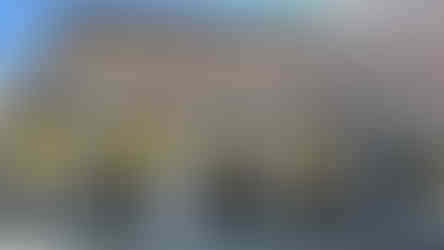



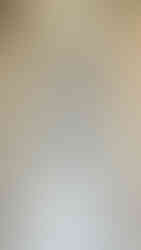
















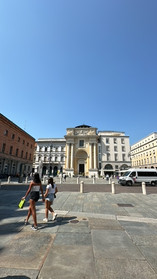



















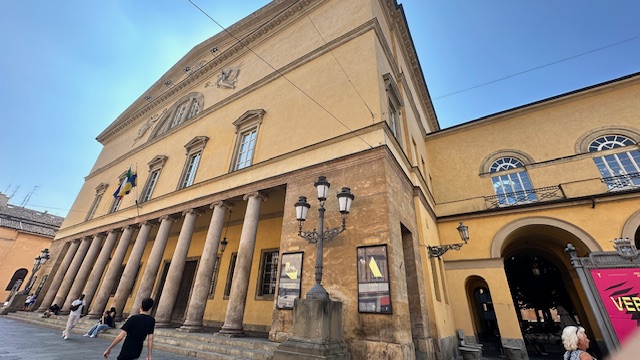
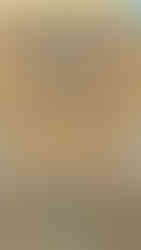

Comentários